Our Excel Curriculum

Our moral purpose
To enrich and enhance pupil’s learning and life experiences, enabling every child to develop a love of learning and achieve outstanding progress and attainment.
Our EXCEL curriculum vision
At Blowers Green Primary School, we want our children to be the best that they can be. This reflects our passionate commitment to learning, driven by our five Trust Values which are at the centre of everything we do. The values underpin our teaching and learning, providing a caring and supportive environment within which our children our surrounded by excellence.
The school’s EXCEL curriculum is underpinned by the National Curriculum but goes beyond it by offering a curriculum that is ambitious, inspiring, creative and innovative; one that develops the whole child, encouraging and challenging them to achieve their full potential; providing them with the skills, knowledge and understanding to become valued citizens of the future.
About the EXCEL Curriculum
The EXCEL Curriculum at Blowers Green Primary has been developed by leaders and staff in our school, most of whom are subject specialists. Grounded in research, the curriculum has been refined to ensure that the content remains ambitious, challenging and exciting for all pupils. A continuous cycle of review is undertaken to evaluate previous learning. This powerful cycle of collaboration ensures that curriculum development and subject knowledge is the heartbeat of the school.
Our curriculum is progressive and sequential, and it has been designed to ensure our children know more, remember more and can do more as they move through school. Our curriculum is highly aspirational and challenges all children to dream big. Learning that inspires will challenge our children to imagine possibilities beyond their own experience, develop their creativity and believe that they can achieve regardless of their background. Above all, our curriculum is designed to help every single child to be the best they can be in all areas of their lives.
EXCEL Curriculum Overviews
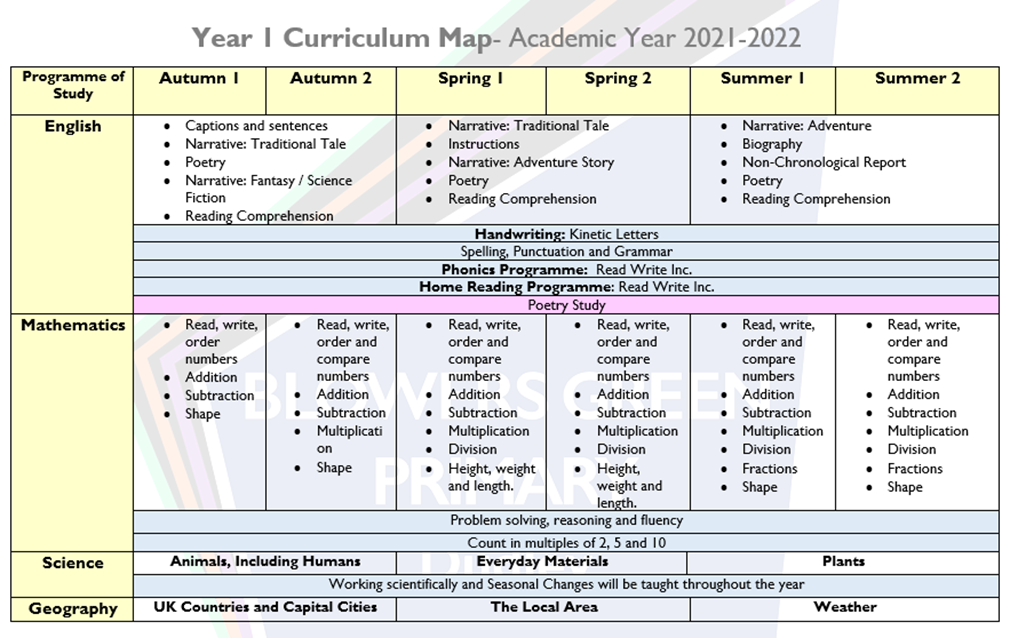
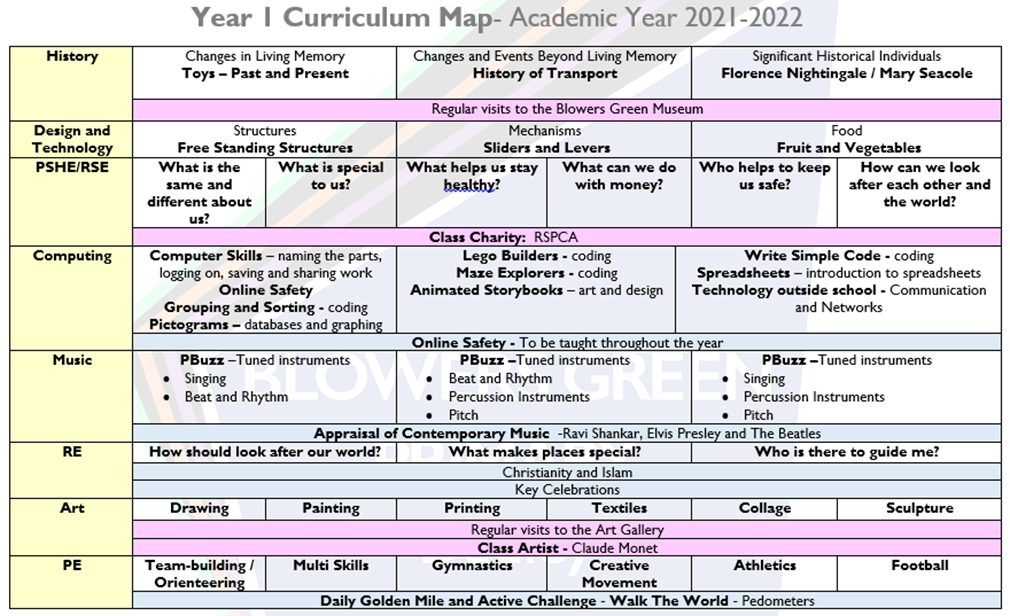
Above is an example of an EXCEL Curriculum overview; you can see the Curriculum Map for your child by going to the page for their year group in this section.
Subjects are taught discreetly to maintain their integrity; however, there are regular opportunities for interconnectedness as teachers plan for all children to make curricular links within and between subjects. Stimulating and purposeful activities and high-quality teaching resources engage children and ensure that they achieve well. The lessons promote deeper thinking through key questions and regular opportunities to review and revisit learning to aid with retention of knowledge over time. Key concepts underpin the ideas we want pupils to grasp, and these are reinforced through different content which allows children to apply their learning in a range of contexts in lessons and throughout their day because every second counts.
The quality of the curriculum planning is strong, clear and progressive. Long term maps and very well sequenced medium term plans with challenging end points and activities are ambitious and go beyond the National Curriculum. High expectations for all, including most able and SEND, permeate all that we do.
What does our long term planning look like?
Our long term plans or ‘road maps’ summarise the end-point knowledge children will learn in each subject.
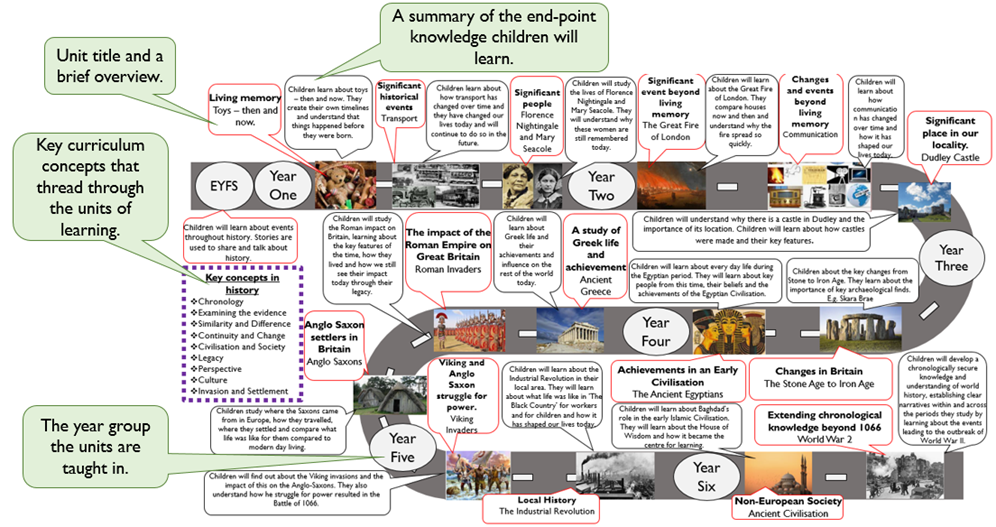
What does our medium term planning look like?
The medium term plans build on our long-term plans and involve more detailed planning of the teaching sequence for how our children will learn the end-point knowledge and skills required for each unit. The knowledge and skills are depicted by the National Curriculum as well as our key curriculum concepts that thread through the units delivered in each subject. Consideration has been given to the order of when content is taught, so that there is progression. For example, in history, British history units are taught chronologically. In art and design, the teaching of drawing begins with children in the Early Years experimenting with a range of tools to represent a face as a drawn circle with marks for features through to manipulating tone, line and pattern in Year 6 to show emotions through detailed sketching. Activities are planned to help develop pupils’ knowledge and challenge their thinking.
All subjects are taught discretely. Effective curriculum planning is in place for all subjects.
History medium term planning - front sheet:
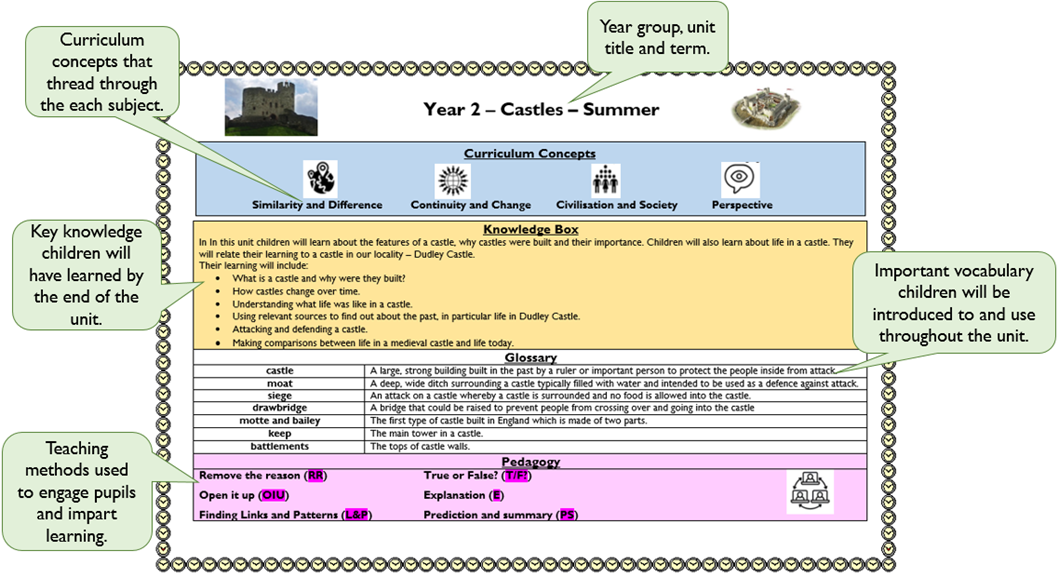
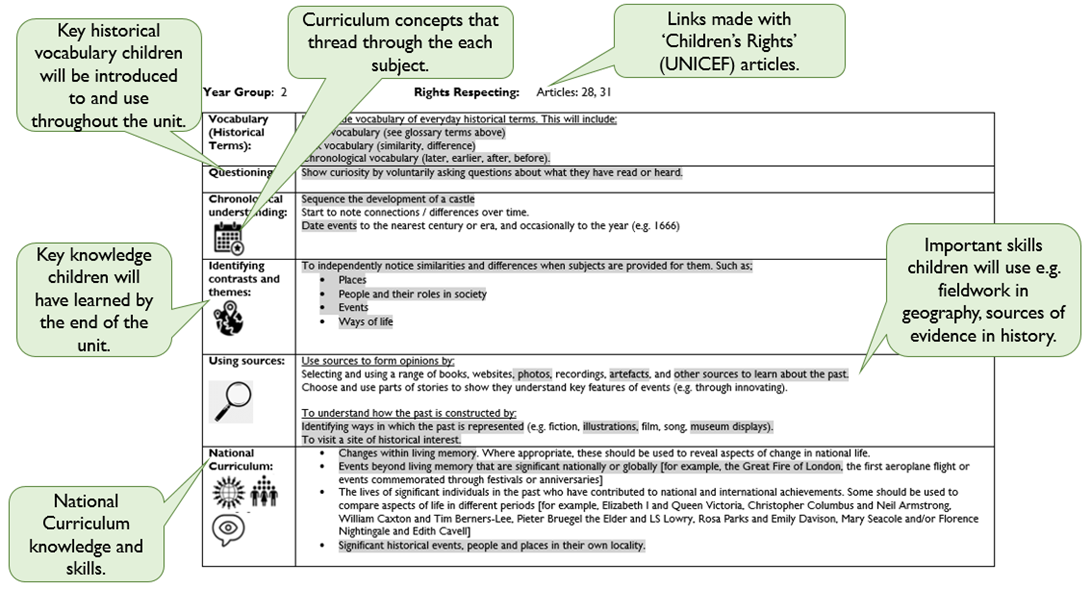
History medium term planning – session plan:
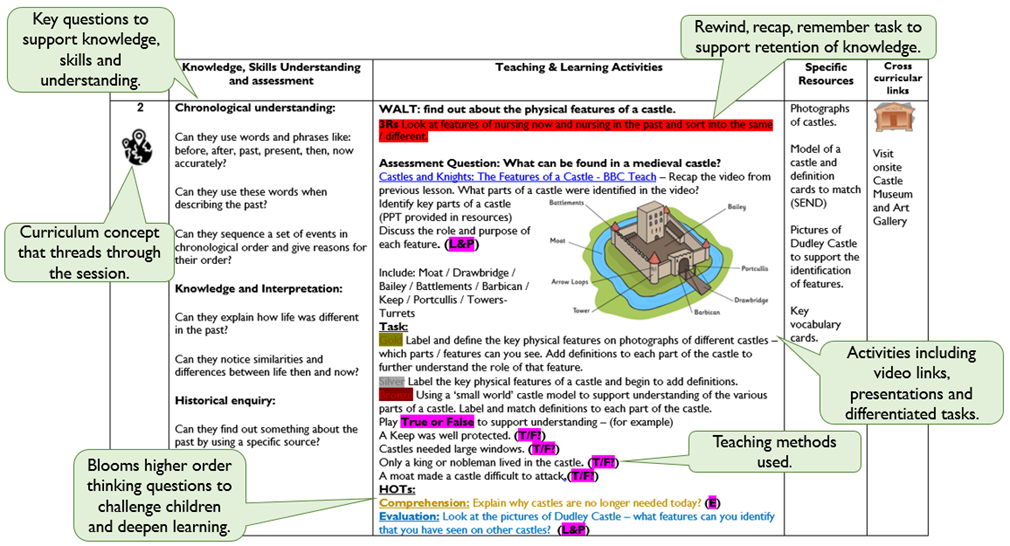
How are knowledge organisers used?
“The most powerful tool in the arsenal of the curriculum designer is the knowledge organiser. These organise all the most vital, useful and powerful knowledge on a single page.”
- Mary Myatt, Curriculum and Knowledge Organisers.
Knowledge organisers are in place for each of the EXCEL subject units. They make knowledge and language explicit, supporting planning, teaching and assessment to help our children know more, remember more and do more.
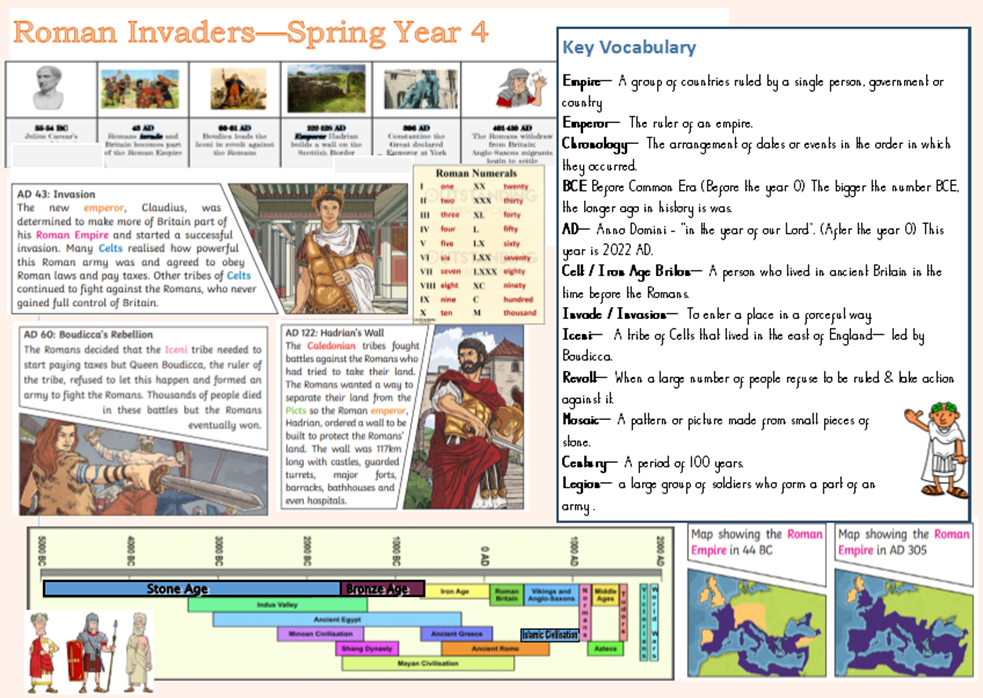
Each knowledge organiser is a summary of the key facts and essential knowledge that children require and will learn about for each of their foundations subjects for the year. They have been put together by subject leaders, and we are delighted to be able to give each child an individual copy. The expectations around the Knowledge Organiser are similar to those of the Learning Journal. They need to be present for every lesson; therefore, children need to ensure they are in their bags every day. Staff ask children to place them on their tables at the start of every lesson where there will be an expectation that they use them to support their learning as they move through the curriculum. As a parent, they will give you a summary insight into what your child will be studying throughout the year and, therefore, enable you to support them further at home.
Teachers will be spending time with the children over the course of the academic year familiarising them with the content and showing them how to use them effectively. To support with this, each class teacher has uploaded a video to every child's class home learning account (Seesaw). We hope you will find this useful. Please visit here to find out more https://app.seesaw.me/#/login
Copies of all knowledge organisers have also been uploaded to this website. You can see the knowledge organiser for your child by going to the page for their year group in this section.
How will the curriculum be implemented?
Our academically rigorous curriculum is designed to enable learners to acquire relevant subject knowledge which underpins the application of skills. The acquisition of knowledge and the development of skills is carefully and progressively mapped across each year group and subject area to create a purposeful and exciting learning journey for every child within a stimulating and challenging learning environment. Our curriculum intent will be implemented through engaging and enthusing children through learning that inspires every lesson, every day.
Teachers have a secure knowledge of the subjects they teach; with many subjects in school being led by specialists. Support is provided through clear strategic planning, a programme of CPD and effective support from leaders. We engage in a constant cycle of review and evaluation.
Subjects are taught discreetly to maintain integrity; however, there are regular opportunities for interconnectedness as teachers plan for all children to make curricular links within and between subjects. Stimulating and purposeful activities and high-quality teaching resources engage children and ensure that they achieve well. The lessons promote deeper thinking through key questions and regular opportunities to review and revisit learning to aid with retention of knowledge over time. Key concepts underpin the ideas we want pupils to grasp, and these are reinforced through different content which allows children to apply their learning in a range of contexts in lessons and throughout their day because every second counts.
Our teaching and learning methods ensure that the curriculum is delivered effectively so that all children make progress regardless of background and ability.
How does the teaching of English fit within the EXCEL Curriculum?
At Blowers Green, we believe that the key skills in English compliment all areas of the curriculum as well as contribute to the social, emotional and educational development of each child. All children need to be able to communicate effectively in order to express themselves with confidence, read fluently and accurately with understanding and communicate through written language showing a clear understanding of grammar.
English skills are encompassed throughout the curriculum. There is a clear emphasis on the teaching of basic English throughout our EXCEL curriculum to ensure that children have opportunities to confidently read, write and talk in a range of contexts to at least a national age-related expectation.
Children are immersed in reading from early years through stories, rhymes and poems as well as our Read Write Inc phonics scheme. Reading is an integral part of classroom learning opportunities and children are encouraged to respond to texts on a personal level. Children’s comprehension and enthusiasm for reading is developed further by giving pupils access to and experiences of a wide selection of literature, ranging all the way from newspapers to classic literature.
Reading and vocabulary development are fundamental to our children succeeding; enabling them to access the next stage of their education and beyond. Opportunities for writing and reading across the curriculum are developed in our EXCEL medium term planning and whole school cross-curricular writing map.
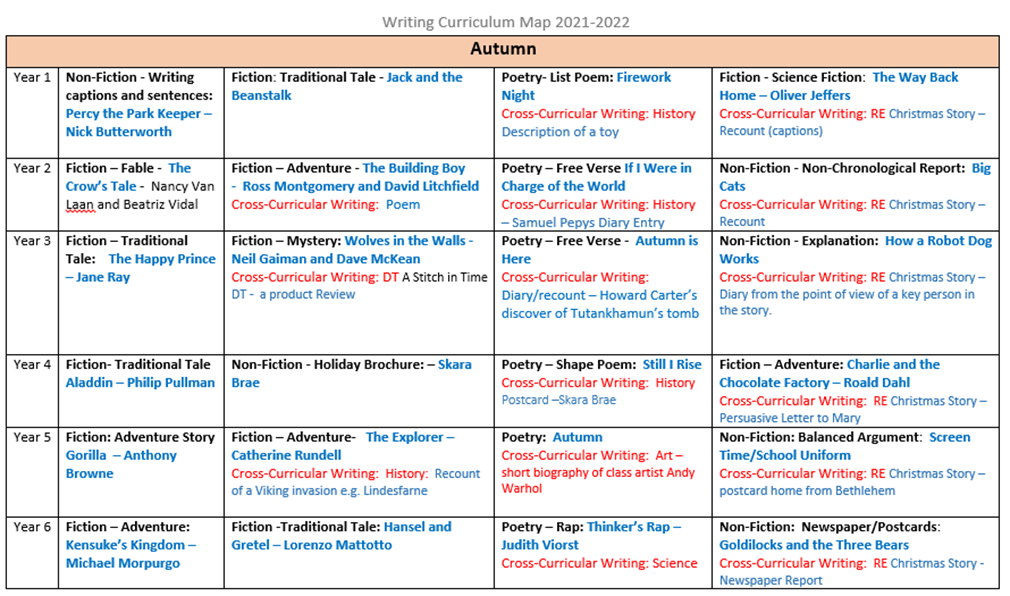
There is a strong emphasis on planning for, teaching and using key topic and subject specific vocabulary throughout the EXCEL curriculum. Pupils are expected to know and understand the vocabulary needed to access the theme that they are learning.
How do we assess the EXCEL Curriculum?
Our approaches to assessing reading, writing and mathematics are robust, established and clear. We use a mixture of summative tests and teacher assessment to make accurate judgements of how well pupils are doing and where they need further support.
Adaptations to The Curriculum and Learning Environment
We make the following adaptations to ensure all pupils’ needs are met:
- Differentiating our curriculum to ensure all pupils can access it, for example, by collaborative learning, 1:1 work, teaching style, content of the lesson, etc.
- Adapting our resources and staffing.
- Using recommended aids, such as laptops, coloured overlays, visual timetables, larger font, etc.
- Differentiating our teaching, for example, giving longer processing times, pre-teaching of key vocabulary, reading instructions aloud, etc.
- Access Arrangements for statutory tests.